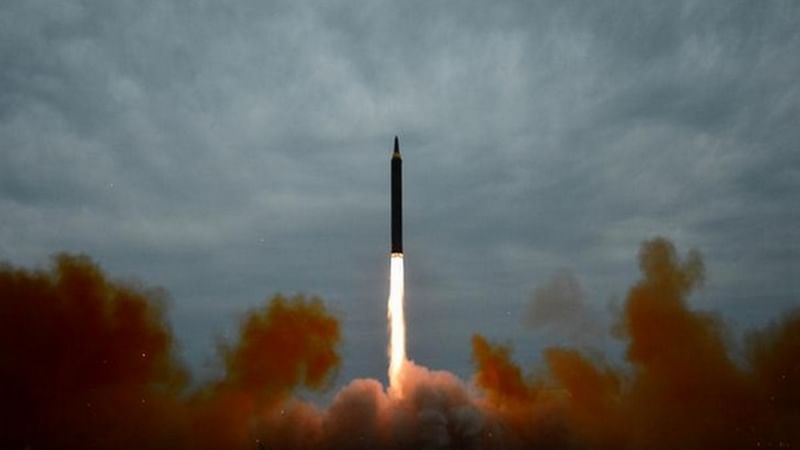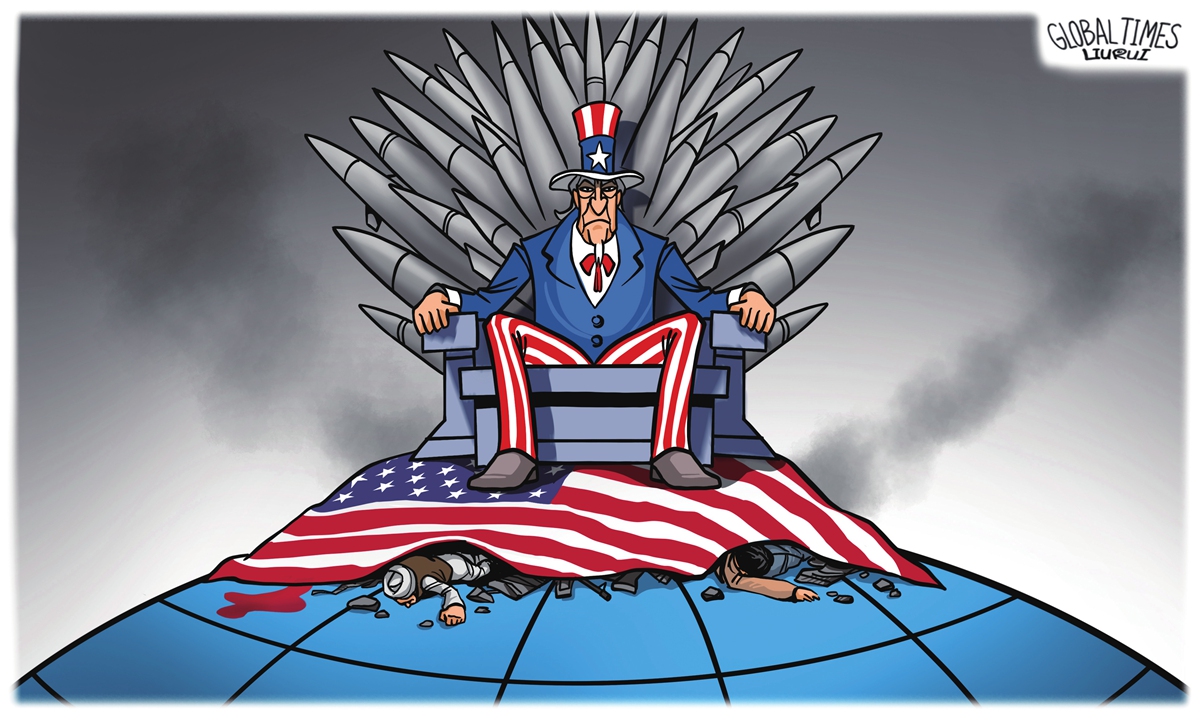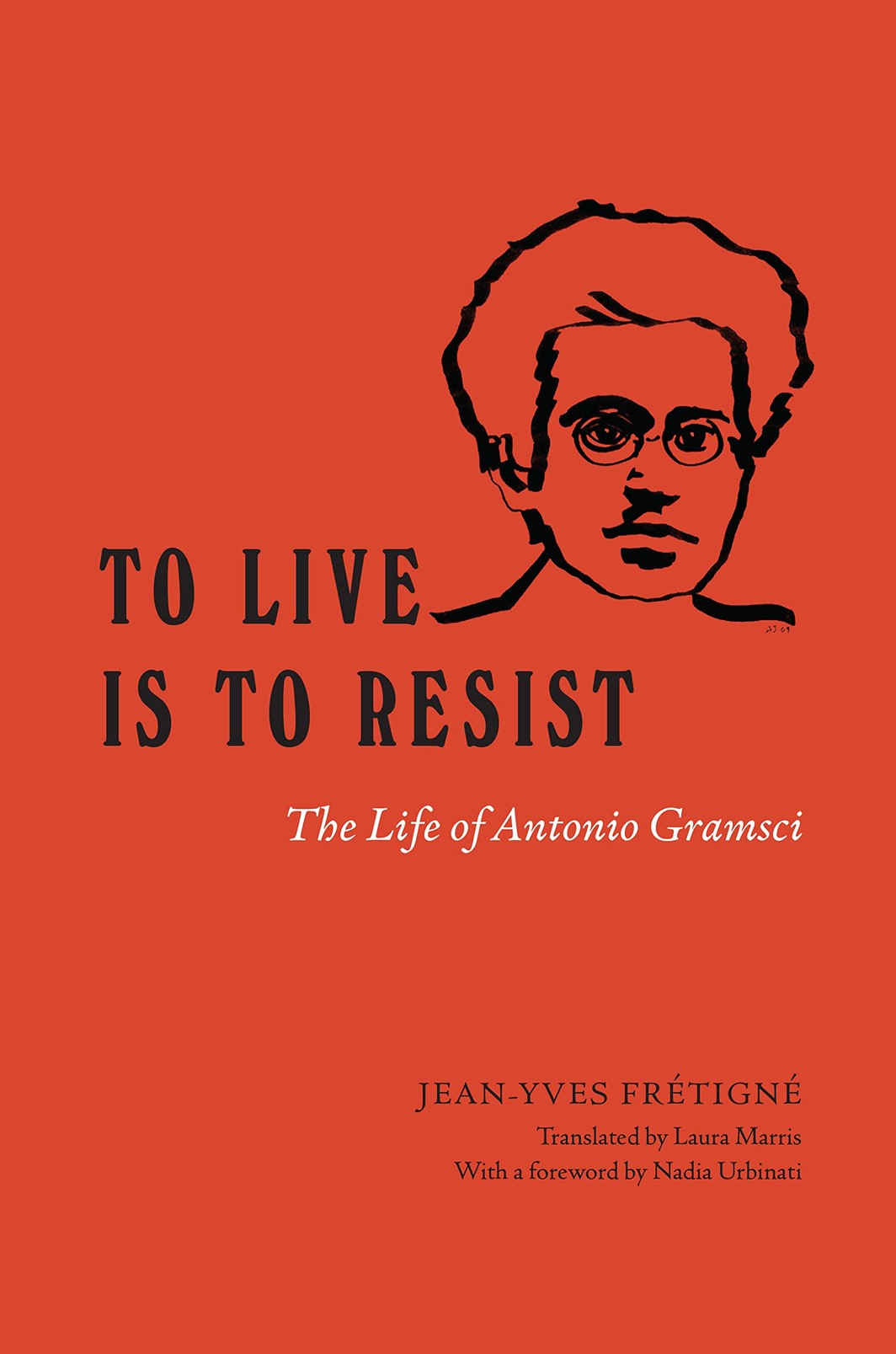
LAST YEAR, during a diversity workshop I was required to take for work, the facilitators asked each of us to share the moment we first became aware of class inequality. One of them gave her example to “get us started” and told us about the time she visited a wealthier classmate’s house and saw a bidet in the bathroom. I think we were meant to laugh, but I kept wondering if this “rich person” was maybe just Japanese. Details aside, I was confused. You would have to live in an absolute cultural vacuum not to realize until that point in life that rich people existed. The class divide was the very foundation of the soap operas I watched as a kid with my grandmother. Her favorites were Young and the Restless and Bold and the Beautiful; both revolved around two wealthy warring families whose dramas were punctuated by the trials and tribulations (faked deaths, split personalities, secret love children, comas, etc.) of the people who worked for them. From my earliest years, I imbibed the lesson that in life you were either a child of Victor Newman or a child of the streets.
The Italian communist Antonio Gramsci (1891–1937) would argue that it was precisely through the proliferation of such norms in our culture—wherein the inequalities of capitalism appear natural, as “senso comune” (common sense)—that the ruling classes stay as such. This concept would become known as “cultural hegemony.” In his early writings for socialist newspapers like Avanti! and later in his Prison Notebooks, Gramsci analyzed folklore, serialized novels, theater, devotional literature—anything he could get his hands on in the prison library—to search for the ways that capitalist logic appeared as a self-evident truth (not some secret hiding in a remodeled bathroom). Accordingly, Gramsci approached the subject of taste with the same vigor that other Marxists reserved for political economy. He reserved special rancor for Eugène Sue’s popular novel The Mysteries of Paris (1842–1843). In the novel, a Prince Rodolphe metes out vigilante justice in Paris’s seedy underbelly. Gramsci said the French serial provided “the romantic setting in which the fascist mentality is formed,” since it presented social problems as something to be solved by a superhero figure rather than through class struggle.
The primacy within Marxism that Gramsci ascribed to culture inspired thinkers like Raymond Williams and Stuart Hall, who, through the field of cultural studies, explored the links between popular culture, mass media, and capitalism. In his essay “Gramsci and Us” (1987), Hall would attribute the triumph of Thatcherism precisely to the prime minister’s efforts to instill “a reversal in ordinary common sense.” Meanwhile, Hall lamented, “the Left forlornly tries to drag the conversation round to ‘our policies.’” Gramsci’s writings on language and power were also a touchstone for postcolonial scholars like Gayatri Chakravorty Spivak and Edward Said as they examined the cultural and linguistic apparatuses of empire.
Indeed, much of what we take for granted about the connection between culture and economic disenfranchisement was birthed by Gramsci in a tiny Italian prison cell. His arrest by the Fascist government for treason nearly killed him (he lost all his teeth and became incapable of digesting solid food). Yet that cell was arguably where Gramsci first truly came alive. His writings prior to incarceration were immature, produced hurriedly (by his own estimation); they are now scarcely cited. As a result, any biography of Gramsci is doomed to be read as a prequel to the Prison Notebooks, a theorist’s origin story we look to for early clues that little Nino would one day grow up to revise Marx to account for the popularity of Arsène Lupin.
To Live Is to Resist, a new book on the life of Gramsci by French scholar Jean-Yves Frétigné, carries the promise of something different, more akin to an intellectual biography that emphasizes ideas over events. Frétigné diligently delves into Gramsci’s life as a student at the University of Turin—where he met the classmates and professors who inspired his political commitments and introduced him to the critical study of language—and covers his time as a journalist for socialist newspapers where he tried to build out a culture beat alongside strictly political news. Yet one longs for Frétigné to retreat further still into Gramsci’s mind. The book is weighed down by well-trodden information about socialist organizing in interwar Italy and made dry by endless acronyms for organizations that fell apart because of infighting and ego. Gramsci urged us to look at bad detective novels and Jules Verne to understand our political reality, and To Live Is to Resist’s best moments are when it takes seriously the unserious.
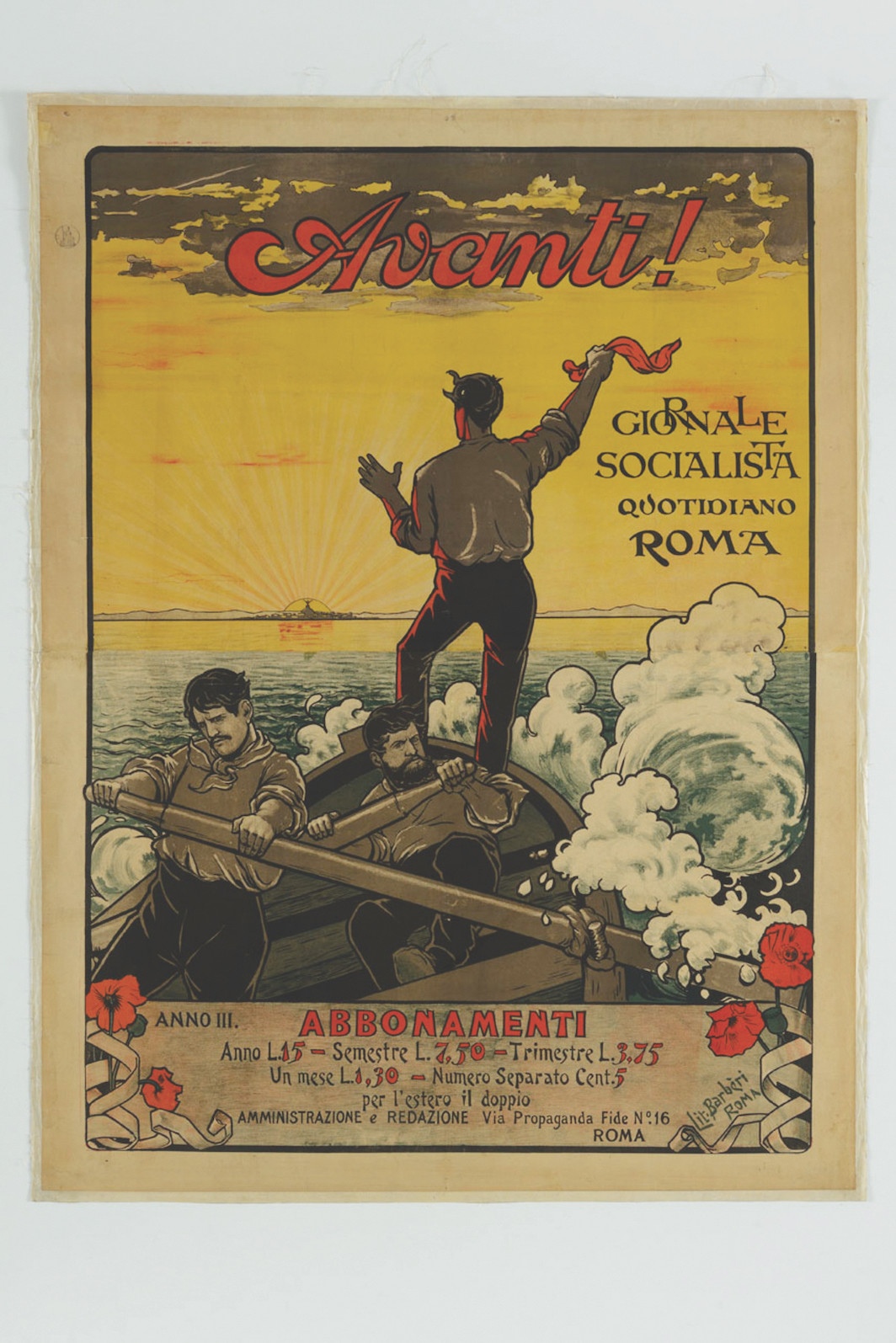 Cover of Avanti!, 1898.
Cover of Avanti!, 1898.GRAMSCI WAS BORN on the island of Sardinia, “the periphery of a periphery,” explains Italian political theorist Nadia Urbinati in a foreword: “Italy was a periphery of Europe, and Gramsci was born in Sardinia, which was itself a periphery of Italy—geographically, politically, culturally, and economically.” Frétigné adds texture to this idea, pointing out that within Sardinia, an island populated mostly by poor peasants and shepherds, Gramsci’s parents were exceptional. For one, his mother could read and write in Italian at a time when just one in thirty women on the island were literate. “The assertion,” interjects Frétigné, “that Antonio Gramsci was the son of poor peasants is therefore a pious legend.” This would soon amount to a distinction without a difference, as the family fell into stark penury when Gramsci’s father was sent to prison. For much of Gramsci’s childhood, his mother was on her own, working as a seamstress and doing laundry. Gramsci and his six siblings had to subsist on one meal a day. For Gramsci, this experience inspired two questions that would guide him for the rest of his life: “Why this poverty, and what could remedy it?”
In 1911, he found his answer in the city of Turin, or “Italy’s Petrograd,” as he called it. The headquarters for Fiat, Turin was “a laboratory for political and union experiments,” writes Frétigné. As a young college student, Gramsci attended socialist meetings and studied with radical professors of linguistics who promoted southern dialects and taught him that Florentine Italian was “the language of an exclusive caste.” By 1915, Gramsci started working for the Turin desk of Avanti!, where he focused his efforts on writing cultural reviews, proving himself to be an acerbic and unforgiving critic. In a scathing review of The Enemy by Italian playwright Dario Niccodemi, Gramsci writes:
Class struggle is seen from the perspective of the tender heart. No distinction is made between social classes, but rather individuals become the caricatures of convention and are represented according to the moral and literary categories of good and evil. . . . Its petty bourgeois mawkishness would make Octave Mirbeau vomit and bring an ironic smile to Maxim Gorki’s lips.
The young Gramsci was also something of a prude. Writing about the popularity of seductive screen siren Lyda Borelli, he complained that sensuality “remains and will remain the major preoccupation . . . of society that does not work or cannot work.” He disliked silent film on the whole actually and for the same reason, complaining it was all bodies and no words.
These early conclusions might strike us now as embarrassingly simplistic (and even elitist), not least of all since cinema was considered by the Soviets to be a revolutionary medium for the masses. Yet what stands out is Gramsci’s conviction that cultural analysis was about recognizing patterns and value systems. In an article titled “Socialism and Culture” (1916), he wrote that his generation must “free ourselves from the habit of seeing culture as encyclopedic knowledge, and men as mere receptacles to be stuffed full of empirical data and a mass of unconnected raw facts.” Such a view has done little more, he argued, than “given birth to a mass of pretentious babblers who have a more damaging effect on social life than tuberculosis or syphilis.” In 1919, he helped establish L’Ordine Nuovo, a socialist newspaper with a dedicated culture section, to counteract precisely that tendency. Gramsci, it turns out, was not the best boss. According to one young editor, after reading some article proofs that he found to be lacking, Gramsci screamed at his staff, “This isn’t a newspaper, it’s a sack of potatoes! Agnelli [the owner of Fiat] can call all his workers together tomorrow and say: ‘Look, you see! This lot can’t even put a newspaper together, yet they want to run the State!’”
The editors of L’Ordine Nuovo were ardent supporters of the Bolsheviks and believed that for communism to be successful in Italy, it would need to follow the Russian model. Like Italy, Russia was still a largely agrarian society, and had not reached the zenith of industrial capitalism that Marx believed was necessary for a successful proletarian revolution. In an article, Gramsci praised the Russians for departing from strict Marxist orthodoxy in this regard, writing: “Why should they [the Russian people] wait for the history of England to be repeated in Russia, for the bourgeoisie to arise, for the class struggle to begin, so that class consciousness may be formed and the final catastrophe of the capitalist world eventually hit them?” One of Gramsci’s articles was lauded by none other than Vladimir Lenin, and in 1922, Gramsci was chosen to be a part of the Italian delegation for a meeting of the Communist International in Moscow.
Gramsci fell ill as soon as he arrived in Russia (he suffered from tuberculosis of the spine) and was sent to a sanatorium a short train journey from Moscow. It was there he met a young woman named Julia Schucht who was visiting her sister. In the early days of their courtship, they visited factories and attended political meetings. When they quarreled, Gramsci joked that she was a Cheka agent tasked with collecting a list of his bad qualities. Or at least Frétigné insists it was just a joke; Julia did in fact work for the secret police as a translator. Gramsci was still in Russia during Mussolini’s March on Rome and as news began to circulate of his attacks on communists. Gramsci refused to be dispirited, writing to one of his former professors: “Fascism really has created a new permanently revolutionary situation, just as tsarism did in Russia. . . . This is the source of my optimism.”
Frétigné hints that Gramsci struggled “with perceiving the true illiberal nature of Fascism,” observing that when he returned to Italy in 1924, he did little to conceal his whereabouts. On the night of November 8, 1926, policeman arrived at Gramsci’s apartment in Rome. Initially, he was sentenced to five years of “confined exile,” and began serving out his sentence on the island of Ustica. While there, Gramsci endeavored again to set up a cultural school. He offered lessons in history and literature, which were attended by his fellow inmates as well as some local inhabitants of the island. Unfortunately, his time there was cut short (he had scarcely gotten past Ancient Egypt). Gramsci was transferred to Milan and then stood trial for higher crimes in Rome. There, the court sentenced him to over twenty years in prison for “planning to topple the regime and replace it with a government of soviets,” which, in all fairness, he was. It was during the trial that the prosecutor famously said of Gramsci, “For twenty years, we must stop this brain from functioning.”
Gramsci had hopes of getting his sentence commuted and imagined a brief stint in prison (it would be eleven years) would finally afford him time for deep intellectual work, not the hurried pieces he had scraped together as a critic for socialist weeklies. In a letter to his sister-in-law Tatiana, he wrote that he was “obsessed” with the idea of doing something “für ewig” (for posterity):
I would like to concentrate intensely and systematically on some subject that would absorb and provide a center to my inner life. Up until now I’ve thought of four subjects . . . (1) a study of the formation and the public spirit of Italy during the past century; in other words, a study of Italian intellectuals and their origins . . . (2) A study of comparative linguistics! . . . (3) A study of Pirandello’s theater and of the transformation of Italian theatrical taste that Pirandello represented and helped to form . . . (4) An essay on the serial novel and popular taste in literature.
What he had outlined would become the basis for the Prison Notebooks. For a time, Gramsci was barred from receiving books from the outside, so he was limited to the reading materials the prison made available, an “abundance of devotional books and third-rate novels,” he wrote to Tatiana. Gramsci saw this as no detriment: “Many prisoners underestimate the prison library,” he explained. The mass-market paperbacks, popular classics, and religious pamphlets were instrumental in helping him formulate the kinds of questions that became central to what we consider Gramscian analysis today:
Why is this sort of literature almost always the most read and the most published? what needs does it satisfy? what aspirations does it answer? what emotions and points of view are represented in these trashy books for them to be so popular?
The Prison Notebooks are not a place to find clear and easily digestible answers to these questions; Gramsci’s notes are infamously cryptic, written using “Aesopian” language meant to evade the prison censor and thus left open to partisan interpretation and misinterpretation. Frétigné is too bogged down by party politics to add clarity to Gramsci’s thinking and how it matured in the lead-up to his incarceration.
A better introduction to Gramscian thought would be an edited volume of the Prison Notebooks with scholarly commentary (I recommend the one by Joseph Buttigieg, father of our current transportation secretary). Luckily, Gramsci’s letters from this time are less equivocal. When Tatiana writes him to say she enjoyed a recent film, Two Worlds (1930), about a love affair between a Jewish woman and an Austrian officer doomed by their supposedly incompatible natures, Gramsci can barely contain himself: “Your remarks astounded me. How can you possibly believe that these two worlds really exist? This way of thinking is worthy of the Black Hundreds, or the American Ku Klux Klan or the German Swastikas. . . . I embrace you tenderly.”
Jennifer Wilson is a contributing essayist at the New York Times Book Review and a contributing writer for The Nation. She is an adjunct instructor at the Craig Newmark Graduate School of Journalism at the City University of New York.
https://www.bookforum.com/
The Unlikely Persistence of Antonio Gramsci
No one understood political battle lines better than a Communist politician from Sardinia.

MARCO BORRELLI
Thomas Meaney/March 30, 2022
NEW REPUBLIC
Sardinia, well into modern times, had all the trappings of a colony. The highlands of the interior still go by the name “Barbagia,” from the Greek word for barbarians. In the nineteenth century, Piedmontese capitalists stripped the island for timber to build railways for the mainland. The native people featured as an attraction for Europe’s Grand Tourists, who regarded them as a curious sampling of primitives. By 1900, the reaping of the fields was still done by hand. Insect plagues were of such severity that farmers were paid by the bushel for locust corpses. Malaria was rife; cholera outbreaks, regular. In the peasant imagination, werewolves roved the land; it was not unknown for village women to transform themselves into cats. When D.H. Lawrence passed through Sardinia in the 1920s, he was pleased to discover a people “outside the circuit of civilization.” The island was not self-evidently fertile soil for intellectuals, much less for one of the most original political thinkers of the twentieth century. But this is where he was from.
Antonio Gramsci’s near-feral Sardinian childhood set him apart from most other leading communist revolutionaries of the interwar years, who tended to originate in cities. His father was imprisoned for petty embezzling as a state functionary in the Kingdom of Italy; his mother scraped by a living mending clothes. When Gramsci was four, a boil on his back began hemorrhaging, and he nearly bled to death. His mother bought a shroud and a small coffin, which stood in a corner of the house for the rest of his youth.
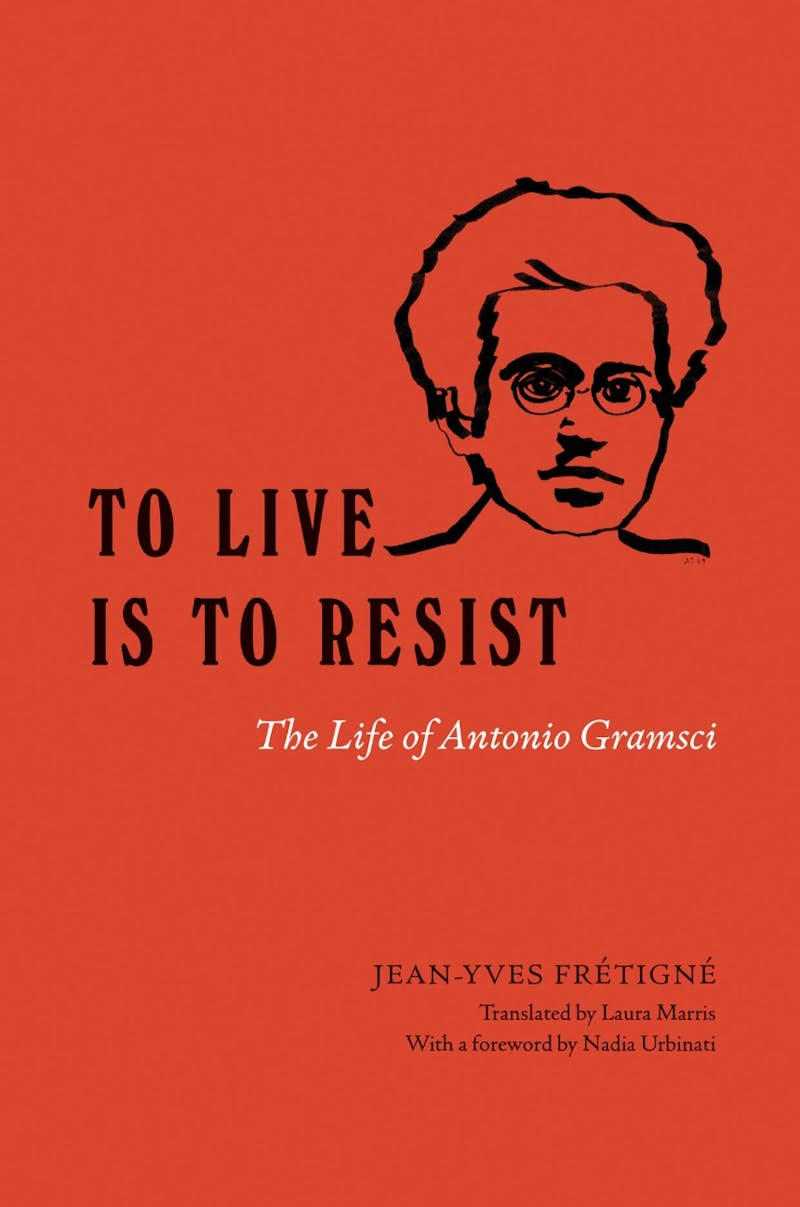
To Live Is to Resist: The Life of Antonio Gramsci
by Jean-Yves Frétigné, translated by Laura Marris
University of Chicago Press, 328 pages, $35.00
As Gramsci’s latest biographer, the French historian Jean-Yves Frétigné, reports in To Live Is to Resist: The Life of Antonio Gramsci, Gramsci was buckled for hours each day into a leather harness contraption that hung from the rafters, intended to repair his spine. He hardened himself with tests of endurance, such as hammering his fingers with a stone until they bled. He kept a pet hawk, and idolized the Sardinian bandit Giovanni Tolu, who outfoxed the local Carabinieri. At school he was rebellious and insolent. Once, he had a dispute with a teacher who did not believe Gramsci had found a monstrous, snakelike lizard with feet. (He had: It was an ocellated skink.)
At the age of four, Gramsci nearly bled to death. His mother bought a shroud and a small coffin, which stood in a corner of the house for the rest of his youth.
Gramsci’s humble origins are often pointed to as a feature of his political martyrdom, his early misfortunes so many stigmata in a life destined to be sacrificed for a tragic cause. Any contemporary biography has to sweep away a great deal of mythology around Gramsci, but the question still remains: How did a child from such a background become the figure whose bounty of concepts—“hegemony,” “passive revolution,” “historical bloc,” “subaltern,” “national-popular,” “organic intellectuals”—remains indispensable, 85 years after his imprisonment and death in fascist Italy? How did Gramsci escape what he would call, in his darker moods, “the sewer of his past” and go on to co-found the Italian Communist Party during the years when revolution seemed poised to break through in Western Europe?
As a young man, Gramsci was a beneficiary of the social dynamics he would do so much to dissect. The Italian bourgeoisie of the turn of the century was determined to preserve its control over the working class, which had begun to form a more organized opposition to their industrialist employers. Northern capitalists did not hesitate to call on the military and mercenaries to put down unrest in the last resort. But there was a more effective and morally preferable alternative to outright domination: hegemony.
Hegemony, as Gramsci would come to define it, was the means by which a leading caste or group in society secured its power. It was to be distinguished from something as total as “social control.” In modern Europe, the legitimation of social hierarchy was best achieved by elites who took the trouble to elicit the consent of portions of the populace, rather than through outright submission. One effective way to consolidate hegemony was to identify members of an exploited class who could help uphold the machinery that ruled them. The finest piece of this machinery had a handsome name: parliamentary democracy. Italian capitalists relied on a stratum of national opinion-makers who would gently signal the need for reforms, while otherwise keeping the political imagination of Italians in acceptable bounds. The program included recruiting talented youth from the provinces to become teachers, journalists, and bureaucrats. Gramsci was selected as one of these students. His first political passion was for Sardinian separatism, but like many provincials—then and now—Gramsci’s intellectual passions were first fired by liberal humanists. He entered the University of Turin in 1911 on a scholarship, and threw himself into literary research and linguistics. He displayed a rock-hard determination to study, and his professors tapped him to be the leading linguist of his generation.
But he could not ignore the political tumult around him. Turin was at that time the Italian Detroit, with one of the highest industrial concentrations on the continent. There he encountered a formidable network of socialists, as well as a dynamic, radical press, led by a roster of attractive figures. There was the dashing, brilliant “liberal socialist,” Piero Gobetti. There was the uneasy, cynical, middle-class Genoese, Palmiro Togliatti, who had also passed part of his youth in Sardinia, and excelled at practical politics. Farther afield, in Milan, there was the charismatic Benito Mussolini, whose columns Gramsci pored over in the daily newspaper Avanti!, and who made his name as an opponent of Italy’s colonial adventure in Libya. Finally, in Naples there was Amadeo Bordiga, the most implacable and stubborn of Gramsci’s future associates, a star mathematics student and precocious labor organizer, who came from an already political family. The two would work together and break and reconcile several times in the years to come.
World War I shattered the unity of Italian socialists. Mussolini first opposed intervening in the conflict, then proposed “active” neutrality, before launching a vigorous campaign for Italy’s entry on the side of the Allies. Bordiga, like Rosa Luxemburg in Germany, was adamantly opposed to the idea of a conflict between national elites being fought on the backs of workers. Gramsci at first backed Mussolini, which earned him the distrust of many Italian radicals whom it would take him years to win back. The outbreak of the Russian Revolution during the war was an even more drastic disorientation for the Italian left. Gramsci and Bordiga realized the socialists had been doing everything wrong: There was no use in being part of a large, unmaneuverable party, aiming to reform capitalism, and vegetating in parliaments. The Bolsheviks showed the way forward in the pincerlike formation of a determined Communist Party.
During the “Two Red Years” of 1919 and 1920, when the Turin workers took control of several factories, it seemed to many that the revolution had arrived in northern Italy. Gramsci gave speeches on the floors of the Fiat factory. But by the time Gramsci and Bordiga, and assorted others, broke away from socialists to found the Italian Communist Party in Livorno in 1921, the strikes of the Turin workers had been broken by the owners, and the European left was in disarray. Italian radicals watched as the Communist Party of Germany was pulverized by an establishment coalition that included socialist democrats. Mussolini’s fascist movement was gathering strength at home. Gramsci and Bordiga initially mistook fascism as the theatrical last gasp of the urban petty bourgeoisie. For Bordiga, who took a kind of pleasure in performing an exaggerated fealty to Marxist principles, all that was needed was to have a well-armed Communist Party in place once capitalism was inevitably swept from the scene. Gramsci, by contrast, burned by his experiences in Turin, viewed politics as a more indeterminate field of battle. Communists, he believed, needed to take a longer view, and develop their own moral and cultural authority to replace the dominant bourgeois culture. The ultimate aim was to entrench a new communist social order in Italy as comprehensively as the church had entrenched Roman Catholicism over the course of centuries.
In 1922, Gramsci and Bordiga traveled to Moscow to attend a plenum of the Communist International. For Gramsci, the city was a new world, especially emotionally. After a rapid decline in his health, he spent time in a sanitorium, where he met the Russian violinist Julia Schucht, with whom he would have two sons. During his spells at the sanitorium, Frétigné reports, the other patients kept their distance from the raving man they took to be a Sardinian barbarian. While Bordiga returned to Italy, Gramsci stayed on in Moscow as Italy’s representative in the International, and moved closer to Lenin.
The fascist storm in Italy was worse than Gramsci had anticipated. Mussolini became prime minister in the fall of 1922. Gramsci, backed by the Kremlin, returned to Italy two years later, and took control of the party. Elected a Communist member of the Italian Parliament, Gramsci exchanged barbs with Mussolini in the Senate chamber, where his constant exposure of Mussolini’s intentions and groundwork exasperated Il Duce. In 1926, Mussolini had his old comrade Gramsci arrested at his lodgings in Rome. At the fascist show trial, the prosecutor declared: “For twenty years, we must stop this brain from functioning.”
We have Mussolini to thank for Gramsci’s metamorphosis from operative to theorist. The prisons of fascist Europe were the greatest university system on the continent. Gramsci set about teaching courses on history and literature, unwinding the years of reading he’d done as a student, and melding it with his experience as a partisan. Inmates became students, and many former communists could hardly believe that the small man with the reedy voice was in fact their Gramsci.
Gramsci called his early days in prison “a fantastic novel,” as he made contact with all sorts of enemies of the fascist state. Exiled to the island of Ustica, he reconciled with Bordiga, who was jailed not long after him, and the two taught the prisoners together. Gramsci’s old friend Piero Sraffa, whom he met in Turin during the “red” weeks of 1919, and who was now a don at Cambridge, became effectively his personal librarian: Gramsci could order books from all over Europe and England, and left many in his wake when he switched prisons.
The correspondence he kept with Sraffa and Schucht in these years—fewer, drier, more political letters to Sraffa; more personal, expansive ones to Julia—which only came to light in the 1940s, is now a classic of European literature. “It seems I’m considered a terrifying individual capable of setting the four corners of the country on fire,” Gramsci wrote his sister two years into his imprisonment. The correspondence itself was one of Gramsci’s methods for fighting off despair. “When I observe men who have been in prison for five, eight, or ten years and observe how their minds have become warped, I shudder to think what will become of me,” Gramsci wrote at a particularly low ebb in 1928. “At least some of them must have been convinced at the start that they would never give in.”
In his letters, Gramsci theorized in every direction. He had a theory about Goethe’s grammar, a theory as to whether the Dinkas of Sudan had a religion that was ecologically determined, a theory about the political import of jazz, a theory about the effects of American toys on children, a theory about the inner lives of sparrows. In contrast to the letters, Gramsci’s Prison Notebooks, some 3,000 pages of notes, are more sustained bursts of political reflection, the disentanglement and exegesis of which is today a major scholarly industry. Gramsci rarely elaborates his best-known concepts in full, but instead works up a kilnlike heat across the pages as he hammers received concepts into new shapes. “Passive revolution,” a term he pulled from the Neapolitan proto-liberal writer Vincenzo Cuoco, was how Gramsci described the way the bourgeois classes of Europe were able to respond to capitalist crises by making genuine social changes, but without altering the basic hierarchy of the society. “Historical bloc” was Gramsci’s term for the shifting collection of social groups that determined the course of society, and “hegemony”—a word Lenin had used more or less interchangeably with “leadership”—became for Gramsci a way of designating a type of power that did not derive separately from the economic, political, or cultural realm, but from the way elements from each combined and complemented one another. Culture, for Gramsci, was the thick web of social associations and habits of thought that, among other things, allowed the capitalist class to rule without having constantly to resort to violence. “One must speak of a struggle for a new culture,” Gramsci wrote, “that is, for a new moral life that cannot but be intimately connected to a new intuition of life, until it becomes a new way of feeling and seeing reality.”
Gramsci only experienced anything like that new way of feeling during his time in Moscow. At least in theory, he could have left prison at any time by signing a paper promising to desist from all political activity, which he refused to do until his health collapsed in 1934. After more than two years under surveillance in hospitals, he died in 1937 of a cerebral hemorrhage in Rome. The fascist authorities insisted his funeral be private. But by that point, Gramsci’s passing barely registered with the battered Italian left, which would only resurrect him as a communist saint after World War II, when his ambiguous relationship with Moscow made him a convenient figure for divergent factions to rally around.
Before left-leaning western elites and academics fell headlong for Foucault in the 1990s, many were enamored of Gramsci, who, thanks to translation efforts of the British New Left, hurtled out of obscurity in the 1970s to become an international phenomenon. Gramsci and Foucault would come to attract admiration for similar reasons. Both were thought to exhibit a healthy distaste for Marxist orthodoxy—aridly anti-communist in Foucault’s case; both proposed more diffuse notions of power than traditional class analyses; both seemed assimilable into the reigning ideology of individualism (Gramsci because of his unique biography and personal style; Foucault for his focus on the “self”); and both made a point of stressing the significance of intellectuals in the social order. The belief that Gramsci somehow privileged the cultural domain over the political and economic helped justify the materialist allergies of at least two generations of professors, while keeping their nominal radicalism intact.
How was this version of Gramsci even possible? The Turin historian Angelo D’Orsi’s 2017 book, Gramsci, una nuova biografia, details how Gramsci’s reputation fared at the hands of his erstwhile comrade, Palmiro Togliatti. The postwar leader of the Italian Communist Party, Togliatti was in charge of distributing Gramsci’s writings after World War II. What had been a minuscule, illegal party shortly before the war ballooned into the largest communist party in Western Europe in 1945, with more than two million members. In 1945, the Italian communists were in a better position to take over the whole country than the communists were in Greece. The size and capacity of the movement terrified the Truman administration to the point that it intervened in the country’s first postwar election of 1948 to ensure a Christian Democrat was installed. Togliatti did not seize the momentum of the communist partisans, in part because he had spent the war in exile, and did not have the reins of a partisan army that had been cut off from the rest of the communist world during the conflict. Instead of concentrating on seizing power, Togliatti favored moderation, opting to work with Christian Democrats, and to clamp down on more radical elements in his own ranks.
Togliatti justified his moderation on allegedly “Gramscian” lines. He proposed that communists would have to build an alternative communist culture, and gradually achieve hegemony outside the state, before taking power. To its credit, the Italian Communist Party did manage some of this: For decades, there was a genuinely alternative culture in Italy where one could become educated about history, art, literature, and economics in a politicized fashion outside the institutions of the bourgeois state. But to this end, Togliatti suppressed Gramsci’s revolutionary commitment, his friendship with Bordiga, as well as his criticisms of Stalin in prison (Togliatti had stuck with the Stalinist line right up through Khrushchev’s secret speech in 1956 and did not want to be exposed by Gramsci’s skepticism). Thus the martyr-everyone-could-agree-on, culture-in-command Gramsci was born.
Despite the wealth of new material and welcome precision that Frétigné and D’Orsi both bring to their biographies, neither quite manages to bring Gramsci alive, in the way that Domenico Zucàro and Giuseppe Fiori did in their earlier accounts of his life. These older authors had the advantage of being able to interview Gramsci’s friends and acquaintances, and wrote with more literary force. Rather than trying to make Gramsci’s life and thought cohere, Frétigné and D’Orsi embrace their fragmentary nature by breaking their books into short, discrete sections that handle particular concepts, controversies, and episodes.
But there may also be a deeper reason why no one has yet produced a biography of Gramsci on the scale and depth of Isaac Deutscher’s majestic studies of Trotsky and Stalin, or J.P. Nettl’s biography of Luxemburg. Since the end of the Cold War, the stakes of Italian politics have rarely seemed smaller, whereas during it they loomed deceptively large. Nixon and Kissinger, after all, partly went to the trouble of crushing Salvador Allende’s regime in Chile out of the fear that it would inspire the Italian Communist Party to re-radicalize and put NATO in the awkward position of protecting hard-line Italian communists from moderate Soviet revisionists. Today, we know the desolate terminus of the postwar Italian Communist Party, and its “historic compromise” with Christian Democracy. Eurocommunism now appears deader than the Soviet original.
Any effective biographical study of Gramsci has to reckon with the fact that, with the collapse of communist parties around the world, much of his thought lost its context and hence some of its contact with the present. After 1991, the Italian philosopher Costanzo Preve argued it was no longer possible to say that Gramsci’s innovative thought had triumphed where Bordiga’s brittle dogma had failed: Both were now skeletons in the catacombs of international communism. One can disagree with the statement, but to dismiss it entirely risks embracing a Gramsci à la carte, thoroughly shorn of his own political moment, ready to be invoked by any interest whatsoever, even sworn enemies of socialism.
Yet is it any wonder that the contemporary left has turned back to Gramsci in the face of capitalism’s ecological crisis? The global northern elite has been preparing for a new passive revolution, in which the world economy will “transition” to a “green” economy that will, on the opposite shore, mysteriously leave their class position untouched. Carbon taxes, green mutual funds, IMF credit for not cutting down your national forest—all form part of an argument for a capitalist solution to a crisis of capitalist production. The most advanced elite reasoning has gone one step further, and emphasized the technological solutions that could become available through entrepreneurial prowess: for instance, by injecting particles into the atmosphere to cool the earth.
As the political economists Geoff Mann and Joel Wainwright have noted, there are even fresh opportunities for U.S. hegemony to rejuvenate if the U.S. military can take over, for instance, the solar engineering business in the same way that the U.S. Navy today ensures much of the world’s sea-lanes remain smooth for world trade. Were the United States, perhaps in concert with China, to become the globe’s environmental warden, then to question American, or U.S.-Chinese, hegemony would be tantamount to imperiling life on Earth. What are the alternatives? The arrival of a left planetary historical bloc hardly seems imminent. Climate refugees may provoke social upheaval but seem unpromising replacements for the revolutionary subject of the proletariat. Whatever its form, the human future portends to be more grim than Gramsci imagined, as the great powers already seem prepared to preside over the mass culling of human populations in the planet’s increasingly uninhabitable zones—the subaltern downgraded to the subhuman.
If Gramsci has aged better than many of his peers, it is in part because he became a thinker for a defeated, rather than a triumphalist, left.
If Gramsci has aged better than many of his peers, it is in part because he became a thinker for a defeated, rather than a triumphalist, left. With his own cause in ruins, Gramsci became ever more interested in the ways of the enemy. One of his abiding inquiries was how capitalist elites and their publicists laundered their perversions of the social order into “common sense,” how they spun morality tales around their economic interests, and how they were able to preserve their leadership of society after each crisis delivered by the capitalist system. The ground of this inquiry may have shifted in the decades since his death, but the main battle lines remain the same, and this still makes Gramsci a thinker worth turning to in our moment.
Thomas Meaney teaches at Humboldt University.
Read More:
Magazine, April 2022,


